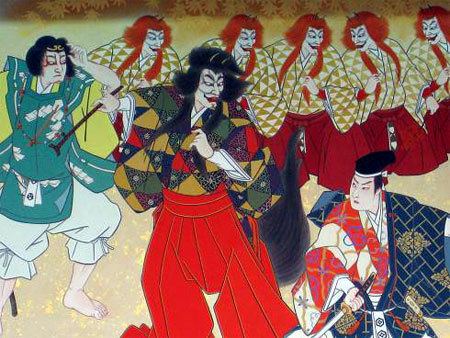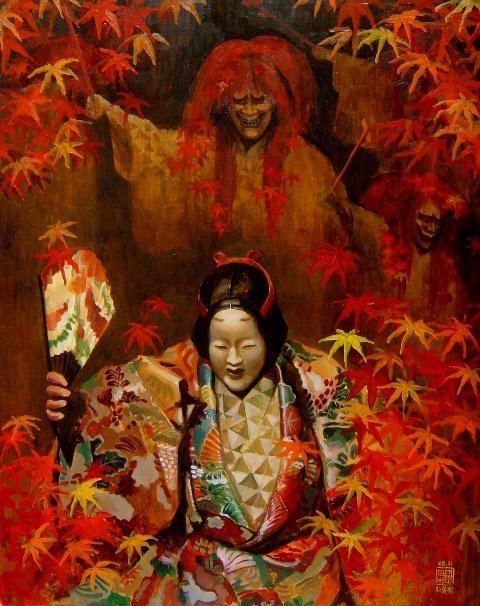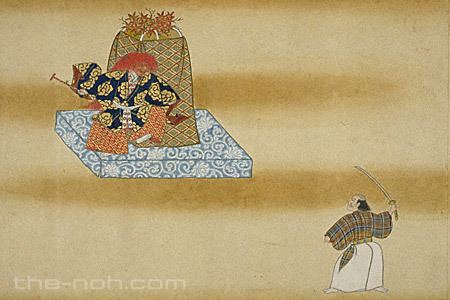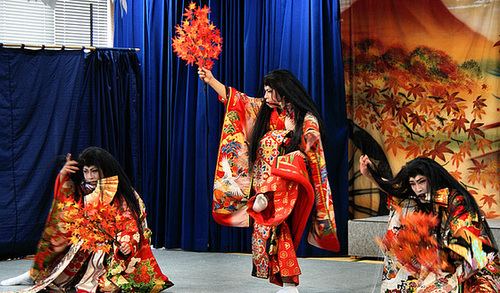Momijigari (play)
8 /10 1 Votes
| ||||||||||||||||||||||||||||||||||
 | ||||||||||||||||||||||||||||||||||
Momijigari 1899
Momijigari (紅葉狩) or Maple Viewing (English title) is a Japanese shosagoto (dance) play, usually performed in kabuki and noh. It was also the first narrative ever filmed in Japan. It was written by Kanze Nobumitsu during the Muromachi period. Other titles for the play include Yogoshōgun and Koremochi.
Contents

The play

The original play, performed in both noh and kabuki, is a story of the warrior Taira no Koremochi visiting Togakushi-yama, a mountain in Shinshū for the seasonal maple-leaf viewing event. In reality, he has come to investigate and kill a demon that has been plaguing the mountain's deity, Hachiman.

There he meets a princess named Sarashinahime, and drinks some sake she offers him. Thereupon she reveals her true form as the demon Kijo, and attacks the drunk man. Koremochi is able to escape using his sword, called Kogarasumaru, which was given to him by Hachiman. The demon gnaws on a maple branch as she dies.

Traditionally the play is accompanied by Takemoto, nagauta and Tokiwazu music.
The first kabuki performance
"Momijigari" was originally noh, but was performed for the first time as kabuki in 1887. It starred the popular actor Ichikawa Danjūrō IX. His performance inspired the first narrative filmed in Japan. Other actors include Onoe Kikugoro V.
The 1899 film
The film version, taken in 1899 by director Shibata Tsunekichi, starred Onoe Kikugoro V and Ichikawa Danjūrō IX. Danjūrō was originally opposed to appearing in films, but was eventually convinced that his doing so would be a gift to posterity.
The film is available for viewing at the National Film Center in Tokyo. One of Japan's earliest films, it was designated an Important Cultural Property in 2009.
